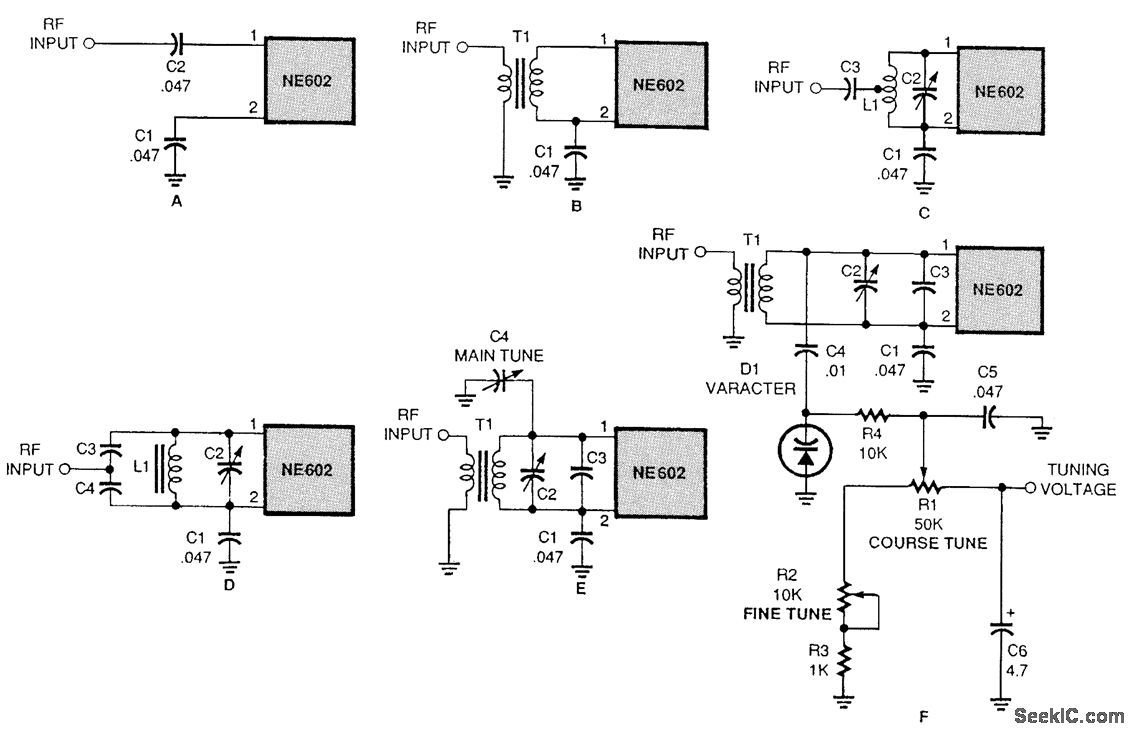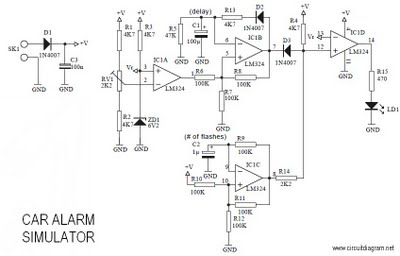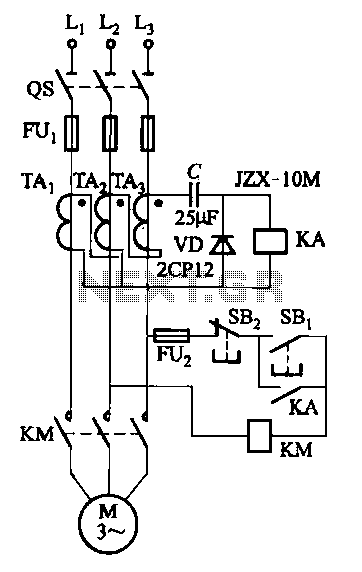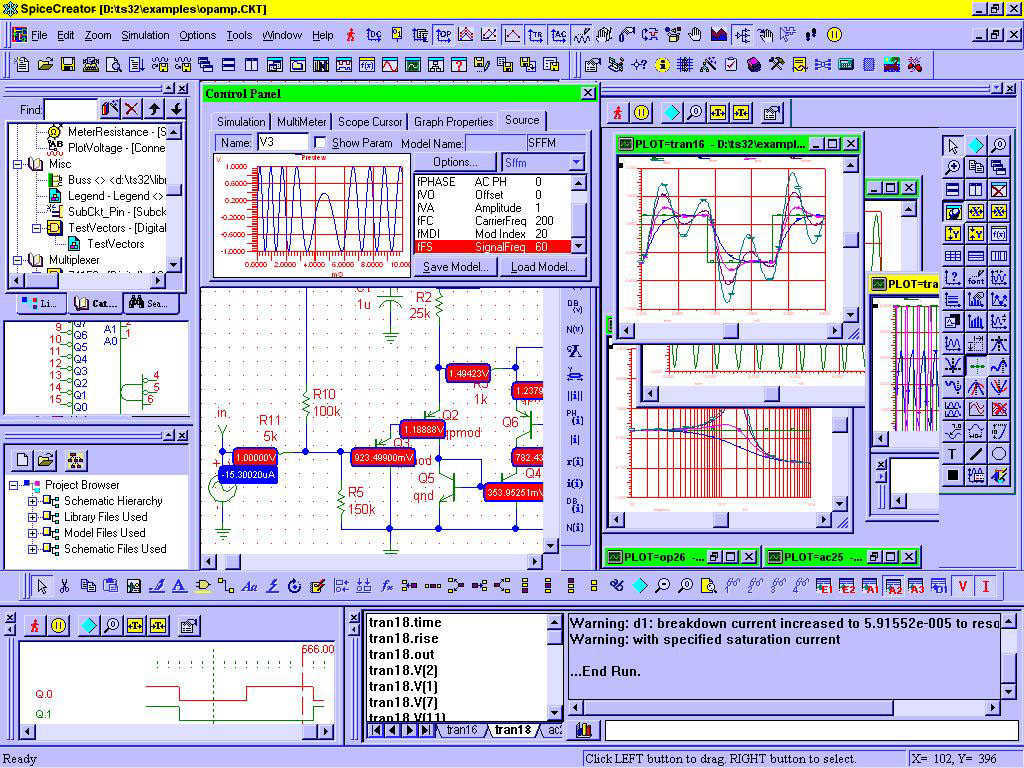
Manual thermostat circuit
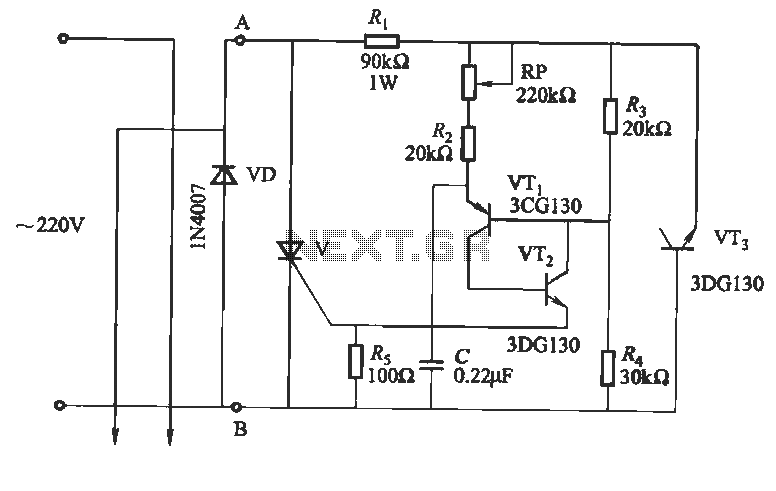
This circuit utilizes an "and other potential triggers" circuit. The term equipotential trigger refers to a crystal bidirectional thyristor trigger, which can be activated by either a positive or negative trigger. In this setup, the control electrode G and the potential of the second anode Tz are equal. The circuit is a straightforward single design. An adjustment potentiometer RP allows for voltage variations from 0 to 210V, which can be used to control an EL heater.
The described circuit employs a bidirectional thyristor, or TRIAC, which is capable of conducting current in both directions when triggered. This feature allows the circuit to function effectively with alternating current (AC) applications. The equipotential trigger mechanism ensures that the control electrode (G) is at the same potential as the second anode (Tz), which simplifies the triggering process and enhances the reliability of the circuit.
The adjustment potentiometer (RP) plays a crucial role in regulating the voltage supplied to the EL heater. By varying the resistance, the user can fine-tune the voltage output, thereby controlling the brightness and operational characteristics of the EL heater. The range of 0 to 210V provides flexibility for various applications, allowing the circuit to be adapted for different power requirements.
In practical applications, this circuit can be integrated into lighting systems, display technologies, or other devices that utilize electroluminescent materials. The simplicity of the circuit design makes it suitable for prototyping and educational purposes, as well as for implementation in commercial products. Proper heat dissipation and component ratings should be considered to ensure the longevity and safety of the circuit during operation.This circuit uses "and other potential triggers" Circuit. The so-called equipotential trigger means crystal bidirectional thyristor trigger, whether positive or negative trigger, which control electrode G and the potential of the second anode Tz is the same. The circuit is very simple single. Adjustment potentiometer RP, 0 ~ 210V voltage can vary EL heater on.
The described circuit employs a bidirectional thyristor, or TRIAC, which is capable of conducting current in both directions when triggered. This feature allows the circuit to function effectively with alternating current (AC) applications. The equipotential trigger mechanism ensures that the control electrode (G) is at the same potential as the second anode (Tz), which simplifies the triggering process and enhances the reliability of the circuit.
The adjustment potentiometer (RP) plays a crucial role in regulating the voltage supplied to the EL heater. By varying the resistance, the user can fine-tune the voltage output, thereby controlling the brightness and operational characteristics of the EL heater. The range of 0 to 210V provides flexibility for various applications, allowing the circuit to be adapted for different power requirements.
In practical applications, this circuit can be integrated into lighting systems, display technologies, or other devices that utilize electroluminescent materials. The simplicity of the circuit design makes it suitable for prototyping and educational purposes, as well as for implementation in commercial products. Proper heat dissipation and component ratings should be considered to ensure the longevity and safety of the circuit during operation.This circuit uses "and other potential triggers" Circuit. The so-called equipotential trigger means crystal bidirectional thyristor trigger, whether positive or negative trigger, which control electrode G and the potential of the second anode Tz is the same. The circuit is very simple single. Adjustment potentiometer RP, 0 ~ 210V voltage can vary EL heater on.

